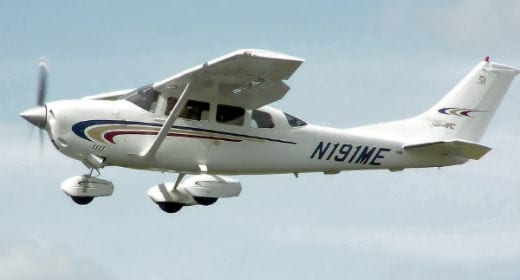Sunday evening, somewhere in Washington State: checking the weather in preparation for the following day’s travel to Wisconsin, previously scheduled via the airlines, I noticed good flying weather across Montana, the Dakotas and into the Midwest. Thinking flying myself would be a lot more fun than Delta, I email a longtime customer in North Dakota to see if he was available Monday afternoon and head for bed hoping the answer would be yes.
An early morning beep from the Blackberry starts the day with good news – a meeting would be possible between 15:00 and 16:30 CDT. I quickly pull out the iPad and start the flight planning process. Waiting for ForeFlight to “pack its bags” with several hundred megabytes of charts, approaches and NOTAMs for destinations I had so far never flown myself to, I realize that this process should have started last night. Fortunately everything is good to go by the time I finish my eggs and coffee and with an obligatory kiss goodbye from my wife, I am off to the airport by 6:45 PDT.
Throwing in two extra quarts of oil, I finish the preflight process and bring the big TSIO-520 to life. By 7:20 I am eastbound in a cruise climb and pick up my IFR clearance with Seattle Center. Leveling off in smooth air at 13,000 feet, the big Cessna 206 manages 140 knots true airspeed at a miserly 13 gallons per hour, lean of peak. A nice tailwind over the mountains pushes the groundspeed up to 180 knots and I start to plan out a fuel stop in eastern Montana.
By 11:45 MDT I am topped off and back to 13,000. Unfortunately the tailwind has died down and my Garmin 430W indicates an ETA too close to 15:00 CDT for comfort. Pushing the power up to 75% shaves 20 minutes from the ETA and two hours later I arrive in Fargo, right on time for a productive meeting within the FBO.
Wheels up again at 17:00, I am on-top at 11,000 and southeast bound for Madison. After deviating around level one and two build ups over the Twin Cities and an approach into MSN at dusk, I shut down at the FBO just after sunset and take a cab downtown to accommodations booked on airbnb.
A cold front pushes its way down from Canada over the course of the week and I wake up Friday morning with a keen eye on the weather. Eager to maximize the value of the trip, I reach out to another colleague in the north east corner of North Dakota and set up dinner for that evening. After buying the office pizza for lunch, I head for the airport, pay my bill, and depart westbound for better weather. A quick fuel stop in Iowa and I head northwest for Grand Forks. Once again, a higher power setting keeps me on time and I am able to enjoy a nice evening with an important business associate.
Saturday morning brings better weather and I am wheels up by 8:30 CDT. Predictably, 20 to 30 knot headwinds slow my progress and I watch the groundspeed dip as low as 115 knots. Realizing I’ll need a fuel stop regardless of power setting, I go to 75% to save time and still make it well into Montana before making a stop. From there the winds subside as the clouds clear and I enjoy breathtaking views as I cross Glacier National Park and northwest Montana. Home by 13:00, I end the week’s 2,500 nautical mile adventure by reflecting on the tremendous value general aviation adds to both my life and business operations.
Post Script: Compared to flying coach on Delta, my trip cost about 30% more in dollars, but saved over 30% in travel time. Flying myself also saved an additional night, which my wife greatly valued, and was a great experience. I hope to acquire an aircraft with more weather utility (FIKI, pressurization) in the near future to add further value to my operations.
- Where is your checklist? Make your own - December 17, 2014
- 2500 miles of value-added flying - October 22, 2014





Don’t forget the tax deductions (advantages).
Also being able to carry large/odd size baggage and the flexibility of schedule are benefits. I have hauled test equipment from Seattle to Ohio that just could not be carried on an airline and been able to stay on an unknown “not till it’s done” schedule.
Conversly,I’ve had the airplane stuck in Utah by a winter storm for a few days and had to make the meeting in Witchita with other transportation. But in general, a basic IFR airplane like a 182 or 206 can be pretty reliable business transportation. Just don’t plan on being able to go 100% of the time.
Agree on the tax deductions. Also, A 206 can go lots of places in northeast North Dakota that Delta won’t.
Great trip, but one problem unless your business is “Anvil Salesman” with demo products along. Wrong Airplane! My good old Mooney 1964 D model also cruises at 140 knots, but at 12,500 uses 7.2 gph, just over half of what yours uses. A dawn departure from Reno gets me to my Son’s place near Milwaukee Timmerman before dinner, usually one fuel stop, depending on wind. Many business stops have been made. Duluth, New Orleans Lake Front, Norfolk, VA and many more between. One problem for me is the delay on the driver’s license medical. Expecting delays there, I have my baby up for sale ten years earlier than hoped and over improved for that expectation. I do now qualify as a UFO.